 W
WSir Jameson Boyd Adams was a British Antarctic explorer and Royal Naval Reserve officer. He participated in the Nimrod expedition, the first expedition led by Ernest Shackleton in an unsuccessful attempt to reach the South Pole.
 W
WPatrick Young Alexander was a British aeronautical pioneer fascinated by the possibility of heavier-than-air flight. He was an enthusiastic balloonist and he was also particularly active in meteorology. He performed many meteorological and aviation experiments, designing and building his own equipment. He travelled widely, visiting Australia in his youth and later making many visits to USA — crossing the Atlantic at least 50 times — he travelled widely in Europe and visited Mexico, Russia, Siberia and Africa in pursuit of his interests.
 W
WAgnar Bachen (1922–1996) was a Norwegian, later naturalized British ship captain. He is mainly notable for having taken the first major shipment of grain from the City of Duluth, Minnesota to Europe establishing Duluth as port city on America’s fourth seacoast one year before the opening of the St Lawrence Seaway in 1959.
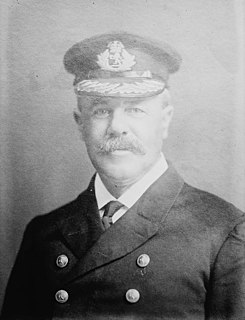 W
WJames Clayton Barr was a Senior Commodore of the Cunard line.
 W
WCommander Joseph Groves Boxhall RD, RNR was the fourth officer on the RMS Titanic, and later served as a naval officer in World War I. Boxhall was the last surviving officer of the Titanic to die.
 W
WHarold Sydney Bride was a British sailor and the junior wireless officer on the ocean liner RMS Titanic during its ill-fated maiden voyage.
 W
WWilliam Cain was a Manx merchant navy officer who served as commanding officer of numerous Isle of Man Steam Packet Company vessels. Cain is remembered for ramming the German U-boat SM UC-26 on the night of 16 February 1917, whilst in command of the Mona's Queen.
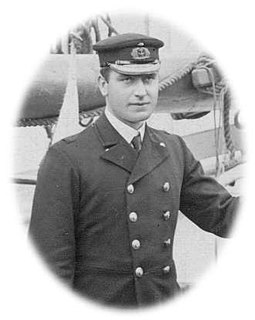 W
WWilliam Colbeck was a British seaman who distinguished himself on two Antarctic expeditions.
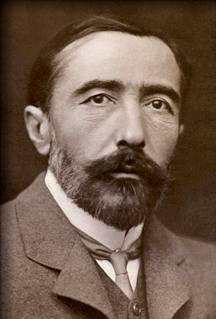 W
WJoseph Conrad was a Polish-British writer regarded as one of the greatest novelists to write in the English language. Though he did not speak English fluently until his twenties, he was a master prose stylist who brought a non-English sensibility into English literature. Conrad wrote stories and novels, many with a nautical setting, that depict trials of the human spirit in the midst of what he saw as an impassive, inscrutable universe.
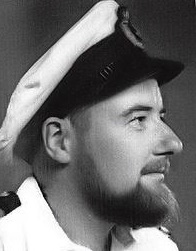 W
WLaurence Michael Dillon was a British physician and the first trans man to undergo phalloplasty. His brother, Sir Robert Dillon, was the eighth Baronet of Lismullen in Ireland.
 W
WVictoria Alexandrina Drummond MBE, was the first woman marine engineer in the UK and the first woman member of Institute of Marine Engineers. In World War II she served at sea as an engineering officer in the British Merchant Navy and received awards for bravery under enemy fire.
 W
WDouglas Valder Duff DSC was a British merchant seaman, Royal Navy officer, police officer, and author of over 100 books, including memoirs and books for children.
 W
WAthelstan Joseph Michael Eavis is an English dairy farmer and the co-creator of the Glastonbury Festival, which takes place at his farm in Pilton, Somerset.
 W
WJohn Maxwell Ferguson was an Australian businessman, politician, and philanthropist. He had business interests in several different industries in Western Australia, and was prominent in the state's Presbyterian community. Ferguson served in the Legislative Assembly of Western Australia from 1903 to 1904, representing the seat of North Fremantle.
 W
WCharles Algernon Fryatt was a British mariner who was executed by the Germans for attempting to ram a U-boat in 1915. When his ship, the SS Brussels, was captured off the Netherlands in 1916, he was court-martialled and sentenced to death although he was a civilian non-combatant. International outrage followed his execution near Bruges, Belgium. In 1919, his body was reburied with full honours in the United Kingdom.
 W
WWilliam Gill was a Manx merchant navy officer who served as commanding officer of numerous Isle of Man Steam Packet Company vessels. Gill was the first recognised captain of the line, retiring with the rank of Commodore.
 W
WHenry Greenhill was a British mariner, Governor of the Gold Coast, commissioner of the navy and Member of Parliament.
 W
WEric Ronald Griffiths was an English musician and dry cleaner, he was best known as the guitarist in the original lineup of The Quarrymen until he left the group in the summer of 1958.
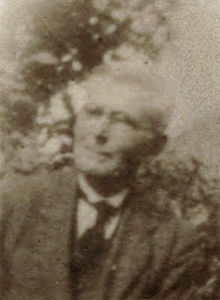 W
WHerbert James Haddock was an English naval reserve officer and ship's captain, and was best known as the captain of the RMS Olympic at the time of the sinking of the Titanic. He was the first person to captain Titanic, overseeing the ship at Belfast while her delivery-trip crew was assembling there from 25 to 31 March 1912.
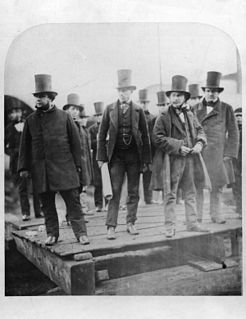 W
WWilliam Harrison was a British merchant navy officer. He was the son of a master in the merchant navy.
 W
WCaptain George Edward Hunt, was a highly decorated Royal Navy submarine commander during the Second World War. While commanding HMS Ultor, he became the British submarine commander with the greatest number of sinkings of enemy vessels to his name, though David Wanklyn achieved sinkings of greater tonnage. Of the 68 torpedoes Hunt fired, 47% hit their targets.
 W
WThomas John Jones was a Welsh officer in the British Merchant Navy from 1893 to, at the least, 1913. Much of his naval career involved the foreign-going steamship, the SS Knight Errant, where he served as an officer.
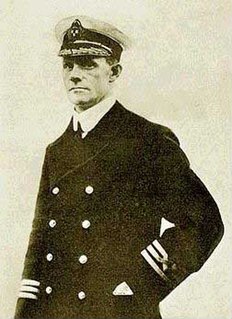 W
WHenry George Kendall was a British sea captain who survived several shipwrecks, including an attack by a German submarine during the First World War, and was also noted for his role in the capture of murderer Dr. Hawley Harvey Crippen.
 W
WCharles Herbert Lightoller,, RNR was a British Royal Navy officer and the second officer on board the RMS Titanic. He was the most senior member of the crew to survive the Titanic disaster. As the officer in charge of loading passengers into lifeboats on the port side, Lightoller strictly enforced the women and children only protocol, not allowing any male passengers to board the lifeboats unless they were needed as auxiliary seamen. Lightoller served as a commanding officer of the Royal Navy during World War I and was twice decorated for gallantry. During World War II, in retirement, he provided and sailed as a volunteer on one of the "little ships" that played a part in the Dunkirk evacuation. Rather than allow his motoryacht to be requisitioned by the Admiralty, he sailed the vessel to Dunkirk personally and repatriated 127 British servicemen.
 W
WStanley Phillip Lord was captain of the SS Californian, the nearest ship to the Titanic on the night it sank on 15 April 1912, and, depending on which sources are believed, likely the only ship to see the Titanic, or at least its rockets, during the sinking. Lord, and the Californian more generally, have been criticized for the fact that the Californian did not render timely assistance to the Titanic despite being only 20 miles away and the only ship that could have reached Titanic before she sank. Two official inquiries were critical of Lord, but did not recommend criminal charges. Subsequent authors have offered differing opinions on Lord's actions, with some defending, and others criticizing him. The passion among the two factions has resulted in the labels of "Lordites" and "Anti-Lordites" being applied to the two camps. Central points of debate typically include the appropriateness of Lord's response to the rockets, whether the Californian and Titanic were in fact visible to one another, the possible presence of one or more "Mystery Ships" that may have been the ships seen by either the Titanic or Californian, and whether or not the Californian could have saved any additional lives had it attempted to render assistance more quickly.
 W
WCommander Harold Godfrey Lowe RD, RNR was the fifth officer of the RMS Titanic.
 W
WDudley William Mason GC was master of the tanker SS Ohio during the Second World War. He commanded the tanker during Operation Pedestal, a convoy to relieve Malta. He was awarded the George Cross for this operation.
 W
WJames Graham, 6th Duke of Montrose was a Scottish nobleman, naval officer, politician and engineer. He took the first film of a solar eclipse and is credited as the inventor of the aircraft carrier.
 W
WJames Paul Moody was the sixth officer of the RMS Titanic and the only junior officer to die when the ship sank on her maiden voyage.
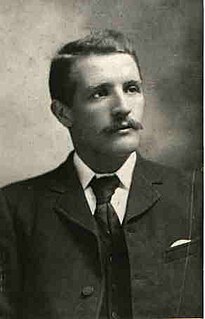 W
WWilliam McMaster Murdoch, RNR was a Scottish sailor, who was the First Officer on the RMS Titanic. He was the officer in charge on the bridge when the ship collided with an iceberg, and was one of the more than 1500 people who died when the ship sank. His body was never recovered. The circumstances of his death are mysterious and therefore the subject of much controversy.
 W
WCaptain Bernard Peter de Neumann GM was a British Merchant Navy officer and convicted pirate.
 W
WFrederick Daniel Parslow VC was an English recipient of the Victoria Cross. Parslow was a Master in the Mercantile Marine, and the first from that Service to be awarded a Victoria Cross. He was the oldest person to receive the VC for actions in World War I.
 W
WJohn George "Jack" Phillips was a British sailor and the senior wireless operator aboard the Titanic during its ill-fated maiden voyage in April 1912.
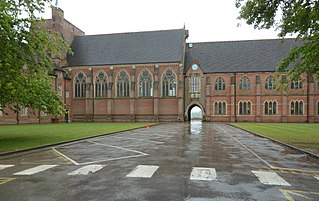 W
WCaptain Aston Dalzell Piper,, known as Peter Piper, was an officer in the Royal Naval Reserve in the Second World War. He was notable for two events: he was the first reservist to command a submarine, and the first reservist officer to receive the Distinguished Service Cross in the Second World War.
 W
WHerbert John "Bert" Pitman MBE was an English Merchant Navy sailor, who was the Third Officer of RMS Titanic when it sank in the North Atlantic Ocean with heavy loss of life after striking an iceberg during the night of 14 April 1912 on its maiden voyage.
 W
WElizabeth Ness MacBean Ross was a Scottish physician who worked in Persia among the Bakhtiari people. With training and a post-graduate qualification in tropical medicine, she responded to an appeal for doctors by the Serbian government in 1915 and treated Serbian casualties, most of whom were victims of typhus. Ross's life and work is commemorated by a plaque in her home town of Tain and her death anniversary is commemorated by ceremonies in Serbia, on 14 February.
 W
WSir Arthur Henry Rostron, KBE, RD, RNR was a British sailor and a seagoing officer for the Cunard Line. He is best remembered as the captain of the ocean liner RMS Carpathia, when it rescued hundreds of survivors from the RMS Titanic when the latter ship sank in 1912, after colliding with an iceberg in the middle of the North Atlantic Ocean.
 W
WArchibald Bisset Smith VC was a Scottish recipient of the Victoria Cross, the highest and most prestigious award for gallantry in the face of the enemy that can be awarded to British and Commonwealth forces.
 W
WEdward John Smith was a British naval officer. He served as master of numerous White Star Line vessels. He was the captain of the RMS Titanic, and perished when the ship sank on its maiden voyage.
 W
WKarel Sperber OBE (1910–1957) was a Jewish Czech surgeon who travelled to England after the Nazi invasion of his country, but unable to practice medicine because he was an alien, took a job as a ship's doctor instead and was captured by Axis forces when his ship was sunk by the Germans.
 W
WCaptain Richard Been Stannard, was a British sailor, officer in the Royal Naval Reserve (RNR), and a recipient of the Victoria Cross (VC), the highest award for gallantry in the face of the enemy that can be awarded to British and Commonwealth forces. Stannard was awarded the first VC to the RNR in the Second World War.
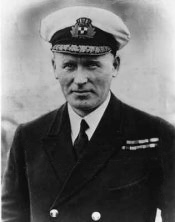 W
WRonald Niel Stuart, VC, DSO, RD, RNR was a British Merchant Navy commodore and Royal Navy captain who was highly commended following extensive and distinguished service at sea over a period of more than thirty-five years. During World War I he was awarded the Victoria Cross, the Distinguished Service Order, the French Croix de Guerre avec Palmes and the United States' Navy Cross for a series of daring operations he conducted while serving in the Royal Navy during the War at Sea.
 W
WJames Teare was a Manx merchant navy officer who served as a seaman and later as an officer on numerous Isle of Man Steam Packet Company vessels. Capt. Teare is best known as the Master of the RMS Ellan Vannin on her ill-fated voyage from Ramsey, Isle of Man to Liverpool on 3 December 1909.
 W
WCaptain John Treasure Jones was a British sea officer who became a well-known media figure in the mid-1960s following his appointment as the last master of the Cunard liner, RMS Queen Mary. He has been described as one of the 20th century's most distinguished mariners, in war and in peacetime. His forebears were men of the sea, who had captained sailing ships, and he elected to follow in their tradition.
 W
WCommander William Thomas Turner, OBE, RNR was a British merchant navy captain. He is best known as the captain of RMS Lusitania when she was sunk by a German torpedo in May 1915.
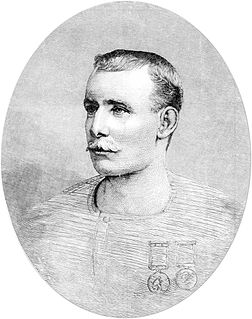 W
WCaptain Matthew Webb was the first recorded person to swim the English Channel for sport without the use of artificial aids. In 1875, Webb swam from Dover to Calais in less than 22 hours. This made him a celebrity, and he performed many stunts in public. He died trying to swim the Whirlpool Rapids below Niagara Falls, a feat declared impossible.
 W
WHenry Tingle Wilde, RNR was a British naval officer who was the chief officer of the RMS Titanic. Born in Walton, Liverpool, England, Wilde died when the ship sank in the Atlantic Ocean.